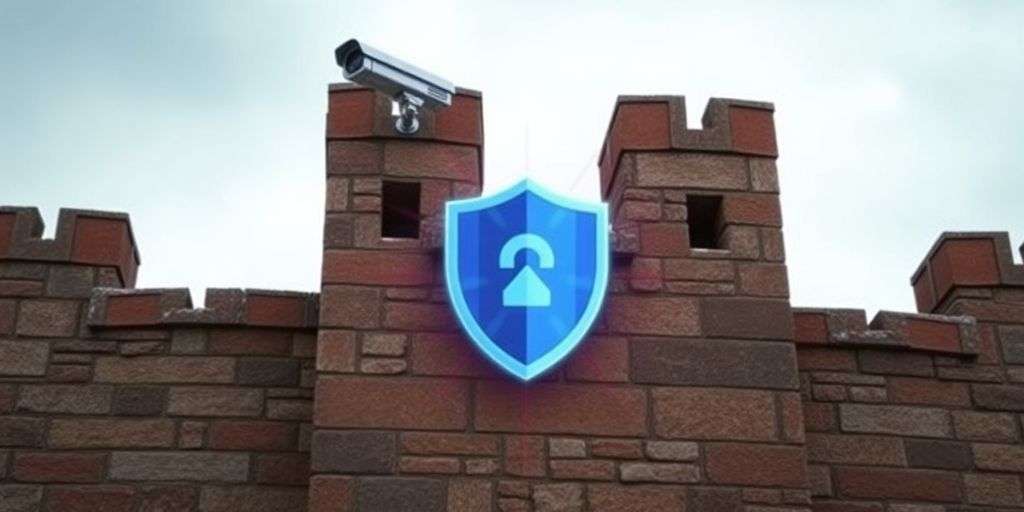Exploring the disadvantages of electric fencing reveals a nuanced understanding of its limitations, installation concerns, and cost implications, alongside its safety and effectiveness. Additionally, the interaction between electric fences and wooden structures is a critical aspect to consider for proper fence functionality.
Key Takeaways
- Electric fencing requires careful consideration of material compatibility and grounding to prevent inefficacy and corrosion.
- Proper use of insulators is crucial to prevent the electrified wire from contacting wood, ensuring both safety and functionality.
- Regular maintenance and monitoring are essential for sustaining the effectiveness and safety of electric fences.
Understanding the Limitations of Electric Fencing
Inefficacy Against Certain Wildlife
While electric fences serve as a psychological deterrent, they may not be effective against all types of wildlife. Some animals, particularly those accustomed to human environments, may not be deterred by the electric shock. Regular monitoring and adjustments may be necessary to maintain the fence’s effectiveness against a broad range of animals.
Challenges with Different Metals and Corrosion
Electric fences rely on the conductivity of metals, and not all metals are equally effective. Corrosion can significantly reduce a fence’s efficiency, which is why choosing the right materials and performing regular maintenance to prevent rust and corrosion is crucial. Using corrosion-resistant materials can prolong the life of your fence.
Periodic Maintenance Requirements
Maintaining an electric fence requires more than just occasional checks. You should clear vegetation regularly to prevent grounding, check for breaks in the wire, and ensure the power supply is consistent. A well-maintained fence not only functions better but also lasts longer. Consider using a voltmeter to check the voltage levels periodically to ensure your fence is operating at its optimal capacity.
Installation Considerations for Electric Fences
When you’re setting up your electric fence, it’s crucial to ensure that it is properly grounded. This guarantees an effective electrical circuit, which is essential for the fence to function as intended. Proper grounding techniques involve using high-quality materials and following specific steps to avoid any power leakage that could diminish the fence’s effectiveness.
Use of Insulators to Prevent Wood Contact
To prevent any unintended grounding and ensure the fence operates efficiently, it’s vital to use insulators. These insulators keep the electric wires from touching wood posts, which could otherwise disrupt the circuit. Make sure to choose durable insulators that can withstand environmental conditions and maintain their insulating properties over time.
Avoiding the Use of Barbed Wire
While barbed wire might seem like a robust option for fencing, it’s not suitable for electric fences. Barbed wire can easily cause shorts in the system, leading to unreliable performance and potential hazards. Instead, opt for smooth wire or tape specifically designed for electric fencing, which ensures safety and reliability.
Remember, the effectiveness of your electric fence largely depends on the quality of installation. Paying attention to these considerations can save you from future problems and ensure that your fence serves its purpose effectively.
Cost Implications of Electric Fencing
Initial Setup and Material Costs
The initial investment in electric fencing might seem steep due to the need for an energizer and other specific components. However, when you consider the durability and the minimal ongoing costs, it’s a worthwhile expenditure. Electric fences can cost between $6-27 US per metre, depending on the complexity and scale of the installation.
Long-term Financial Benefits
Over time, the financial benefits of electric fencing become apparent. Its low maintenance requirements—no need for regular painting or intensive repairs—significantly reduce upkeep costs. This makes electric fencing not only a practical choice but also a cost-effective one in the long run.
Comparison with Traditional Fencing Methods
When compared to traditional fencing methods, electric fencing offers a distinct advantage in terms of both cost and effectiveness. Traditional fences often require more materials and labour, which can drive up costs. In contrast, electric fencing is simpler and less resource-intensive, making it an economical option for many property owners.
Safety and Effectiveness of Electric Fences
Psychological Deterrent Over Physical Barriers
Most animals are strong enough to escape through physical barriers. A psychological deterrent, like an electric fence, improves the effectiveness of existing barriers. This method not only enhances security but also trains the animals to respect the boundaries, significantly reducing the likelihood of them escaping.
Reduced Risk of Animal Injury
Electric fencing offers enhanced security and safety for your livestock. The mild electric shock delivered by the fence acts as a psychological deterrent, training the animals to respect the boundaries and preventing them from escaping. This can significantly reduce the risk of livestock wandering onto roads, neighbouring properties, or getting lost. Additionally, electric fencing can effectively keep predators out, protecting your livestock from potential harm.
Daily Monitoring and Voltage Checks
To ensure the continuous effectiveness and safety of your electric fence, daily monitoring and voltage checks are essential. Proper functioning of electric fencing must be ensured to maintain its deterrent effect and to prevent any potential failures that could lead to accidents or escapes.
Can Electric Fences Touch Wood?
Importance of Using Insulators
It is critical that the hot electrical wire does not touch the wooden fence. A range of insulators is available to allow an electrified wire to be erected on the top or interior of the fence. Offset type insulators will put the fence wire away from the existing fence, preventing animals from pressing against it. Using proper insulators is essential to maintain the effectiveness and safety of your electric fence.
Risks of Direct Contact with Wood
Direct contact between electric fences and wood can lead to several issues. The wood can become a conductor when wet, potentially shorting the fence and reducing its effectiveness. Additionally, this contact might lead to fire hazards during dry conditions. It’s crucial to ensure that no part of the electrified wire touches the wood directly to avoid these risks.
Solutions for Integrating with Wooden Structures
When integrating electric fences with wooden structures, using insulators is the best approach. These devices ensure that the electric wires are held away from the wood, preventing any unintended electrical paths. Here are some steps to effectively integrate electric fences with wooden structures:
- Select the appropriate type of insulator for your specific fence design.
- Install the insulators at regular intervals along the fence line.
- Regularly inspect the insulators and the fence line to ensure there is no direct contact with wood.
By adhering to these guidelines, you can safely incorporate electric fences with wooden structures, ensuring both functionality and safety.
Conclusion
In conclusion, electric fencing presents a compelling alternative to traditional barrier methods, offering both psychological deterrence and physical restraint with minimal harm to livestock. However, it is imperative that the electric wire does not come into contact with wood, as this can lead to grounding issues and reduce the efficacy of the fence. Proper installation and maintenance are crucial to ensure that electric fences function as intended, providing a safe, cost-effective, and durable solution for managing livestock and protecting property.
Frequently Asked Questions
Can an electric fence touch wood?
It is critical that the hot electrical wire does not touch the wooden fence. A range of insulators is available to allow an electrified wire to be erected on the top or interior of the fence. Offset type insulators will put the fence wire away from the existing fence, preventing animals from pressing against it.
Why is my electric fence so weak?
The electricity must complete a full circle back to the charger through the ground. Poor grounding gives weak shocks. Using different types of metals can lead to corrosion, making poor contact and weakening shocking power.
Can you use barbed wire for an electric fence?
Electric fencing offers a safer alternative than conventional barrier fences such as barbed wire and woven wire. It’s less harmful than many fence types, which routinely cut, gouge, and scrape livestock, leading to expensive vet bills and production losses.





